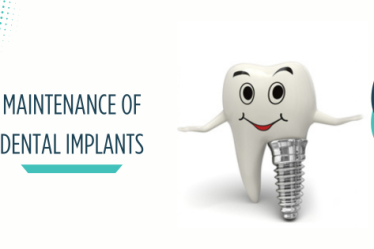
Dental health is a factor that plays a significant role in the overall well-being of an individual. Missing teeth not only affect the ability to chew and speak but can also lead to a lack of confidence and self-esteem. Dental implants have emerged as a revolutionary solution for replacing missing teeth, offering a durable and cosmetically appealing alternative to traditional dentures or bridges.
Understanding Dental Implants
Dental implants are artificial structures that are designed to mimic the form and function of natural teeth. They are composed of two primary components: the implant itself, which acts as a replacement for the tooth root, and the crown, which is the visible part that looks like a natural tooth.
The implant is typically made from titanium, a biocompatible material that integrates well with bone tissue. This integration is crucial, as it provides a stable foundation for the artificial tooth. The crown is usually made from porcelain or ceramic, which can be matched to the color of the surrounding teeth for a seamless appearance.
The Science Behind Implant Integration
The process that allows dental implants to become a permanent part of the jaw is called ‘osseointegration.’ After the implant is surgically placed into the jawbone, the bone begins to grow around it, effectively anchoring it in place. Titanium’s unique properties allow it to fuse with the bone over a period of several months, creating a stable base for the replacement tooth. The length of the osseointegration process can vary, but it is essential for long-term success.
The Three Phases of Dental Implant Surgery
Phase One: Assessment and Planning
Before the implant process begins, a comprehensive dental assessment is conducted. This includes dental X-rays, 3D images, and possibly dental models. These diagnostic tools help the dental professional assess the health of the jawbone and determine the optimal placement of the implant.
The planning stage is crucial as it involves evaluating the patient’s overall medical health, mouth, and specific needs. The dentist, often in collaboration with a specialist such as an oral surgeon or periodontist, uses this information to devise a tailored treatment plan.
Phase Two: Implant Placement
The second phase is the surgical placement of the dental implant. It is usually done under local anesthesia, although sedation options are available for patients with dental anxiety. During the procedure, the dental surgeon makes an incision in the gum to expose the bone. A special drill is then used to create a space within the jaw into which the implant is placed.
Once the implant is secured, a protective cover screw is placed on top to allow the area to heal and the osseointegration process to begin. The gum is then stitched back over the implant site. The healing phase can take anywhere from a few months to half a year, depending on the individual’s healing ability and bone quality.

Phase Three: Abutment and Crown Placement
After the implant and jawbone have properly fused, the next step is placing the abutment, an extension of the implant’s metal post. This is the part that will eventually support the crown. In some cases, a second minor surgery might be necessary to expose the implant and attach the abutment.
Once the abutment is in place, impressions are taken of the teeth and the implant to custom-make the crown. The crown is crafted to match the shape, size, and color of your existing teeth to ensure a natural appearance. Finally, the crown is either cemented or screwed onto the abutment, completing the restoration.
Pros and Cons of Dental Implants
Pros
- Durability: Dental implants are incredibly sturdy and can last a lifetime with good oral hygiene and regular dental check-ups.
- Functionality: They restore bite force comparable to that of natural teeth, allowing for a natural chewing ability.
- Aesthetics: Implants provide the most natural and aesthetically pleasing tooth replacement.
- Bone Preservation: Unlike dentures, implants prevent jawbone deterioration because they replace tooth roots and stimulate the bone.
- Oral Health: They do not require altering adjacent teeth for support, which preserves more of your natural tooth structure.
Cons
- Surgical Procedure: Implant placement is a surgical procedure and carries the inherent risks of surgery.
- Time-Consuming: The process can be lengthy due to the required healing time in between steps.
- Cost: The cost of dental implants can be higher than other tooth-replacement options, and insurance coverage varies.
- Medical Eligibility: Not everyone is a candidate for dental implants. Individuals with certain health conditions or insufficient bone density may not be suitable without additional procedures.
Conclusion
Dental implants represent an impressive blend of science, art, and technology, providing a reliable solution for those suffering from tooth loss. Their ability to integrate with the human body, combined with the craftsmanship in creating the visible tooth parts, make them an outstanding choice for anyone looking to regain their smile and the functionality of their teeth. They’ve revolutionized dental care, offering a long-term investment in one’s oral health and quality of life. As with any medical procedure, a thorough evaluation and a detailed discussion with a dental professional are essential to determine if dental implants are right for your specific circumstances.


